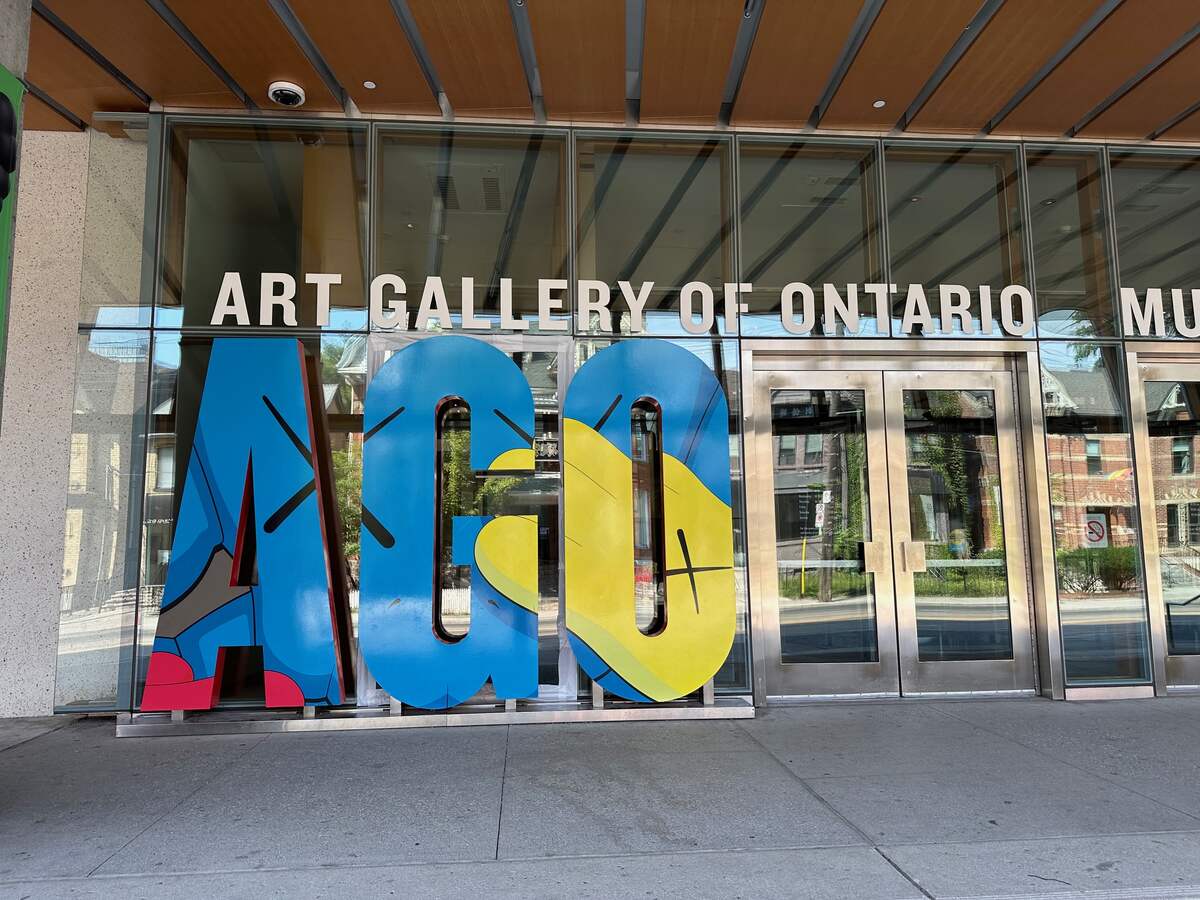The Art Gallery of Ontario (AGO), nestled in the heart of downtown Toronto, is one of Canada’s most distinguished art institutions. Renowned for its vast collection of over 90,000 works, the AGO offers an inspiring journey through the world of art, making it a must-visit for art enthusiasts and casual visitors alike.
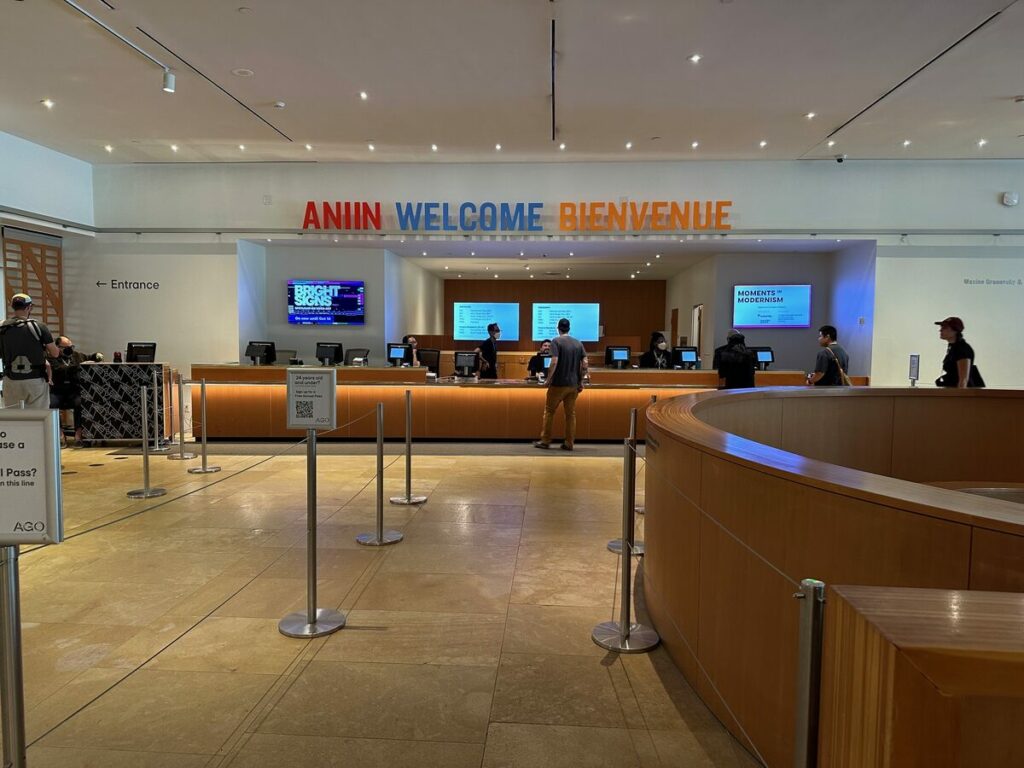
The AGO’s mission is to bring people together with art to see, experience, and understand the world in new ways. This mission is reflected in the gallery’s diverse and dynamic exhibitions, educational programs, and public engagements that attract tourists from around the globe. The AGO continually strives to be a welcoming and inclusive space where art can be appreciated and understood by everyone.
A Rich Historical Legacy
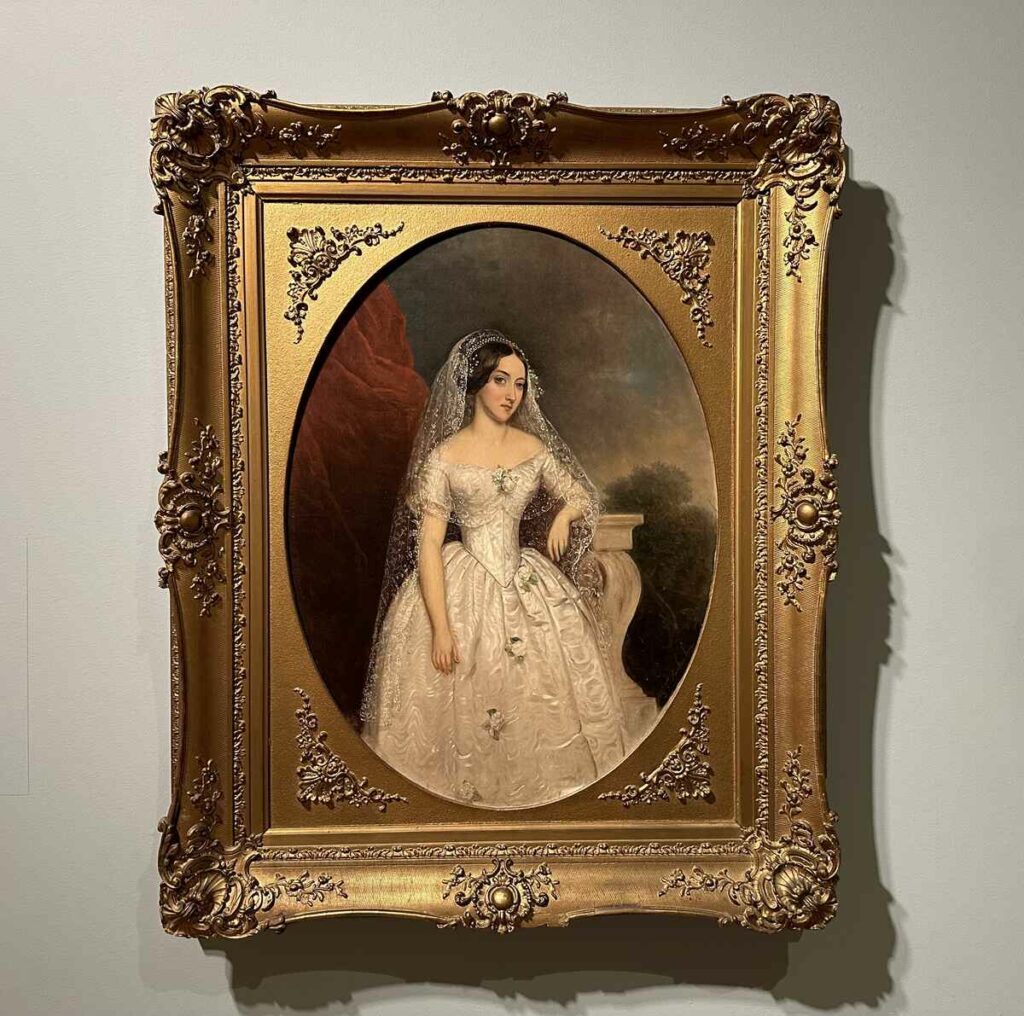
The AGO’s origins are deeply rooted in Toronto’s history. Harriette Boulton Smith, originally Harriette Goldwin, was a significant figure in the cultural history of Toronto. She was the wife of William Henry Boulton, a former mayor of Toronto, and later married gold mining magnate William Henry Smith, adopting his surname. Harriette was a prominent socialite and philanthropist and her residence was called The Grange.
The Grange: A Historic Gem
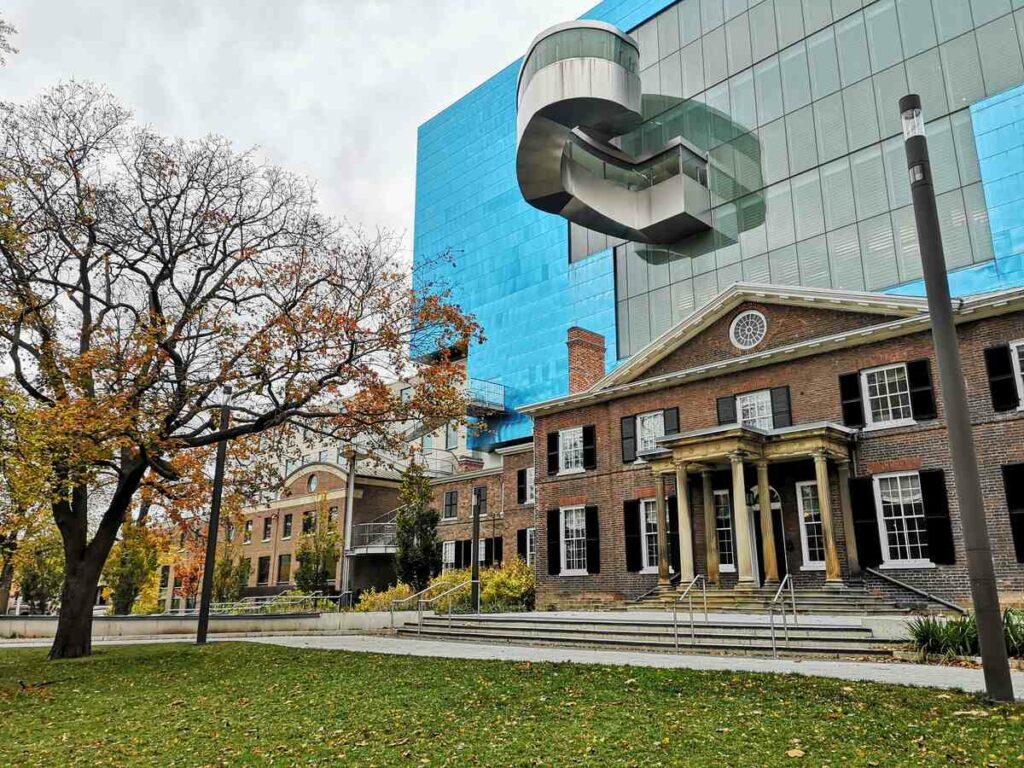
Today, The Grange serves as the AGO’s members’ lounge, offering a serene space for relaxation and reflection, often overlooked by many visitors as it is not easily identifiable. Built in 1817 by D’Arcy Boulton Jr., The Grange is one of Toronto’s oldest surviving brick houses and a prime example of Georgian architecture with its symmetrical design and classical proportions. Originally a family residence, it was home to the influential Boulton family and served as a social and cultural hub in 19th-century Toronto. In 1902, Harriette Boulton Smith bequeathed The Grange to the Art Museum of Toronto, marking the establishment of what would become the Art Gallery of Ontario. The historic building is preserved as a National Historic Site of Canada, providing a quiet and elegant retreat within the bustling gallery. The lounge offers views of the surrounding gardens and retains its historical charm, blending seamlessly with the modern AGO complex and connecting the institution’s rich past with its vibrant present.
The Ken Thomson Collection of Canadian Art
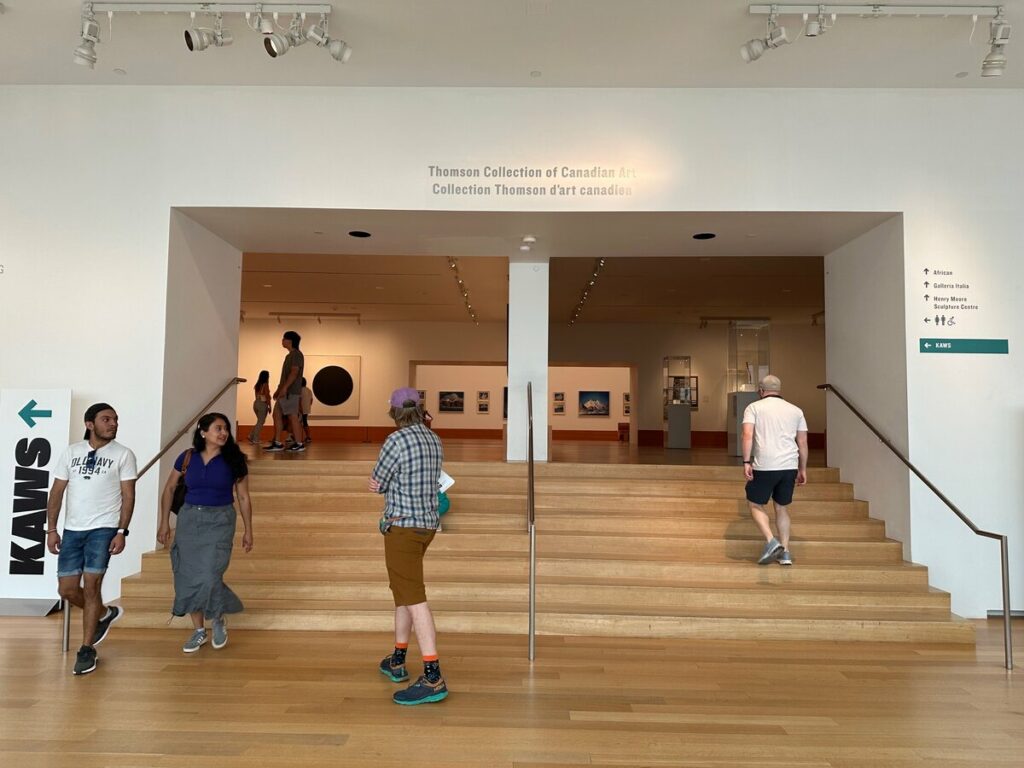
One of the AGO’s most notable benefactors is Ken Thomson, whose extensive art collection significantly enriches the gallery’s holdings. Ken Thomson donated over 2,000 works of art, including a wide array of Canadian art, European masterpieces, and intricate ship models. His contributions have allowed the AGO to house some of the most significant artworks in the world, making it a global art destination.
Architectural Marvel by Frank Gehry
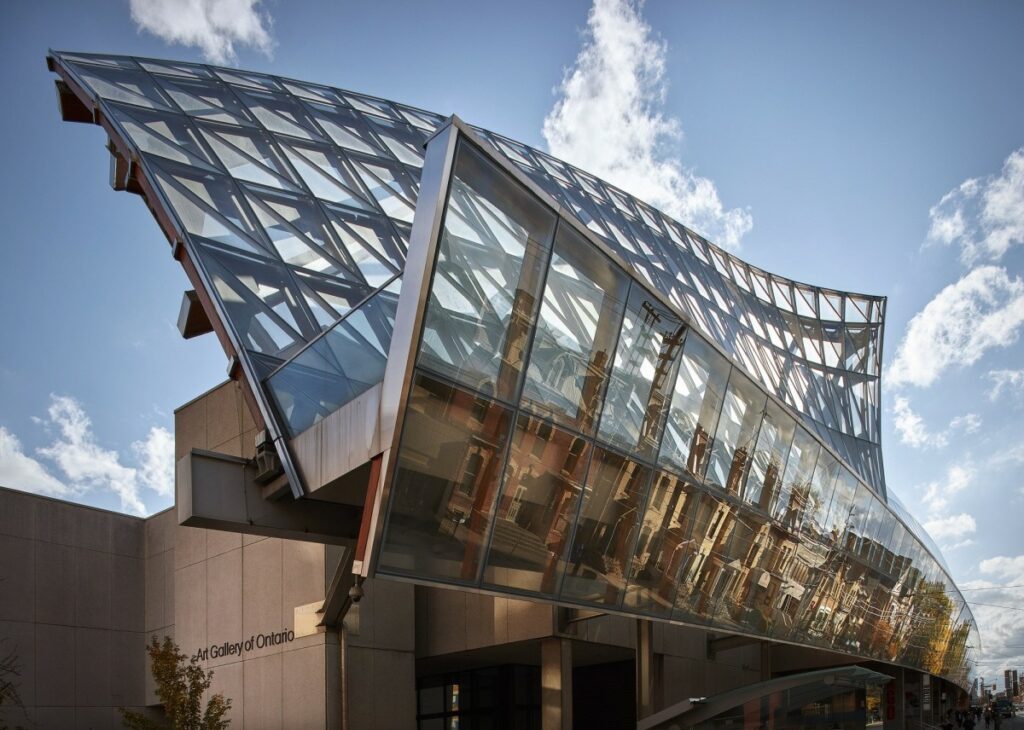
The AGO’s transformation is also a testament to the genius of Toronto-born architect Frank Gehry. Gehry was tasked with reimagining the building, and his design has become an iconic part of Toronto’s skyline. The new facade, which resembles a sleek, modern canoe, reflects Gehry’s innovative approach to architecture. The design not only enhances the gallery’s aesthetic appeal but also improves its functionality, providing more space for exhibitions and public events.
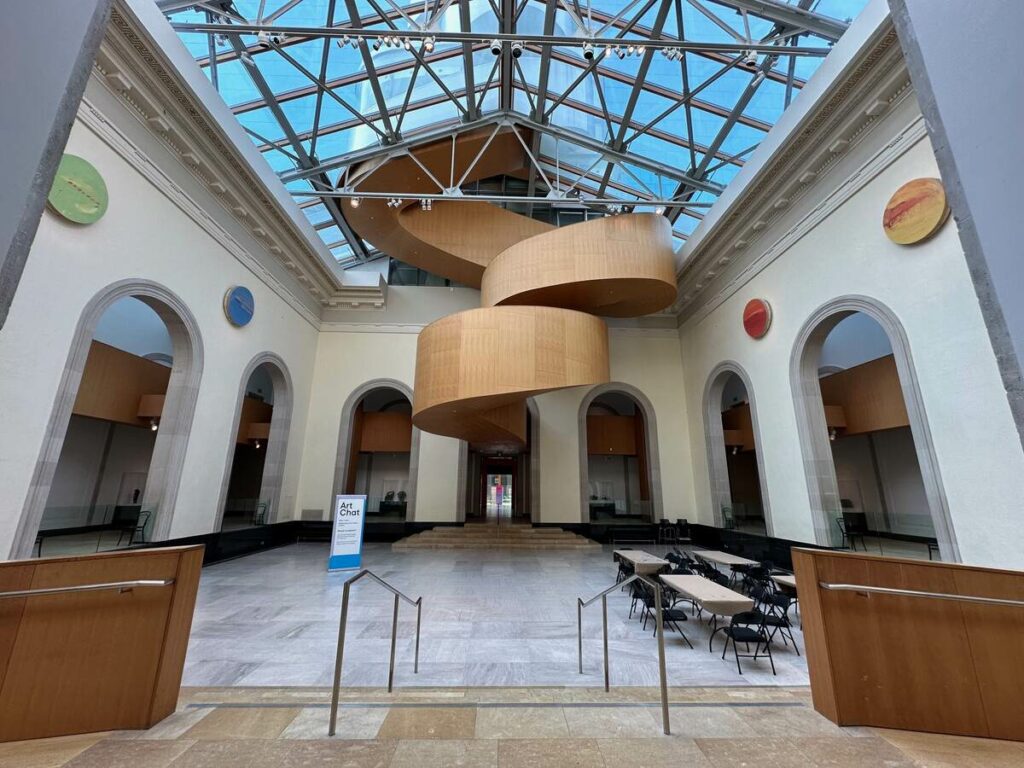
One of Toronto’s most distinctive architectural features is the AGO’s Frank Gehry-designed Allan Slaight and Emmanuelle Gattuso Spiral Staircase. This striking Douglas fir-clad staircase elegantly ascends from Level 2 through the glass ceiling, extending to the 5th Level, and overlooks the Gallery’s central Walker Court. It serves as a dramatic focal point for numerous performances, tours, events, and everyday visits.
Iconic Paintings at the AGO
Among the treasures at the AGO are three of my personal favorite paintings, each with its own unique history and significance.
“The Massacre of the Innocents” by Peter Paul Rubens (circa 1610)

Why would such a haunting painting captivate me so deeply? It’s the intense emotion it stirs within me with each visit, as if I’m seeing it for the first time, every time. I vividly recall my initial encounter with it, situated in a dimly lit room to the left as you first enter the gallery. The strategic placement at the room’s end, against a backdrop of midnight blue, drew me in irresistibly—much like the mesmerizing Copacabana tracking shot in the diner scene of Goodfellas. The painting felt larger than life. Now, it resides in a brightly lit room against a vast light blue wall, which fails to evoke the same powerful atmosphere.
This dramatic and powerful painting by Peter Paul Rubens is a highlight of the AGO’s collection. Acquired by Ken Thomson for a staggering $100 million in 2002, it became the most expensive Old Master painting ever sold at auction at that time. Initially believed to be the work of Rubens’ assistant, Jan van den Hoecke, it was George Gordon, a Sotheby’s expert in Flemish and Dutch art, who discovered similarities to other works by Rubens from the same period. His expertise led to the rediscovery of the painting as an authentic Rubens, making it one of the most valuable pieces in the gallery. The painting’s dynamic composition and emotional intensity draw visitors into the tragic biblical scene, showcasing Rubens’ masterful use of colour and movement.
“The Marchesa Casati” by Augustus John (1919)
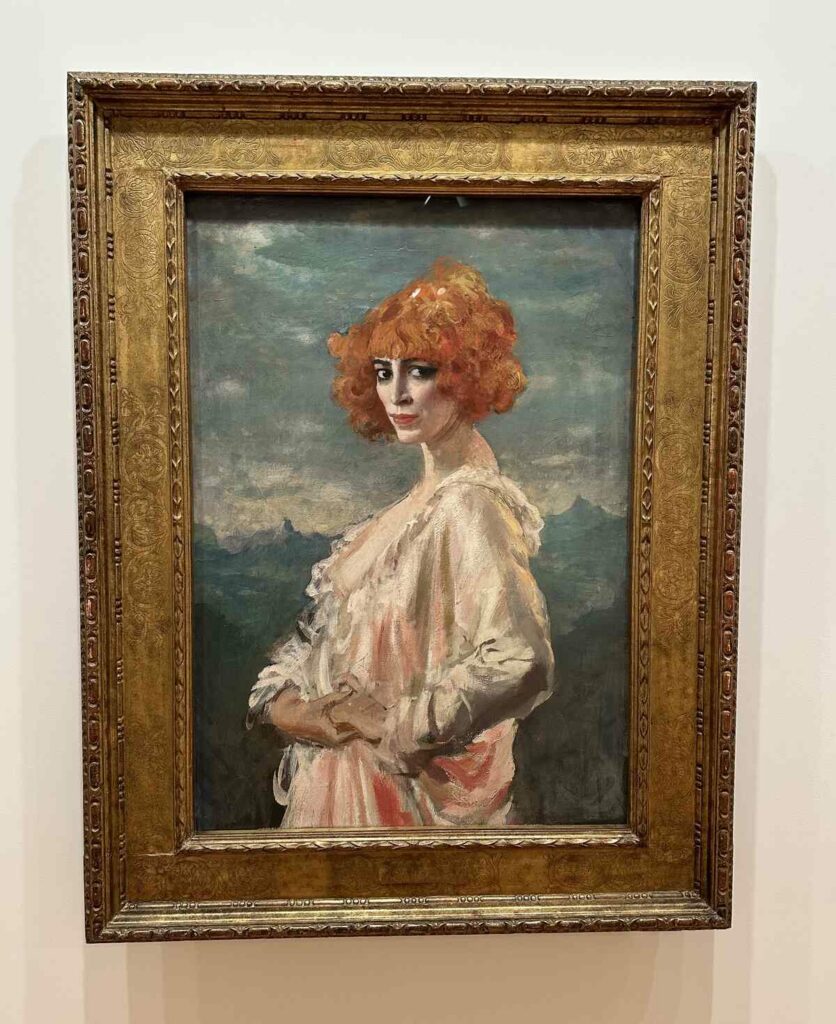
There is nary a visit where I don’t stop by to see the Marchesa. The portrait of The Marchesa Casati by Augustus Edwin John is a captivating masterpiece that captures the enigmatic and extravagant essence of one of the early 20th century’s most fascinating women. Marchesa Luisa Casati was a legendary figure, renowned for her flamboyant lifestyle and unbridled eccentricity. She was often seen parading her pet cheetahs on diamond-studded leashes, a testament to her lavish tastes and boundless imagination. Her soirées were the stuff of legend, filled with opulence and eccentricity.
Despite her immense wealth and prominent social status, the Marchesa’s life ended in stark contrast to the grandeur she once embodied. She died penniless, a tragic finale to a life that had been a spectacle of extravagance and excess. Augustus Edwin John’s portrait of her is both mesmerizing and haunting, a poignant reflection of her larger-than-life persona and her ultimate downfall. The intensity of her gaze in the painting draw viewers into her world, evoking a sense of mystery and melancholy. It is this intricate blend of beauty, extravagance, and tragedy that makes the portrait of the Marchesa Casati an enduring and unforgettable piece, compelling me to visit it time and again.
“The Deluge” by Kent Monkman (2019)
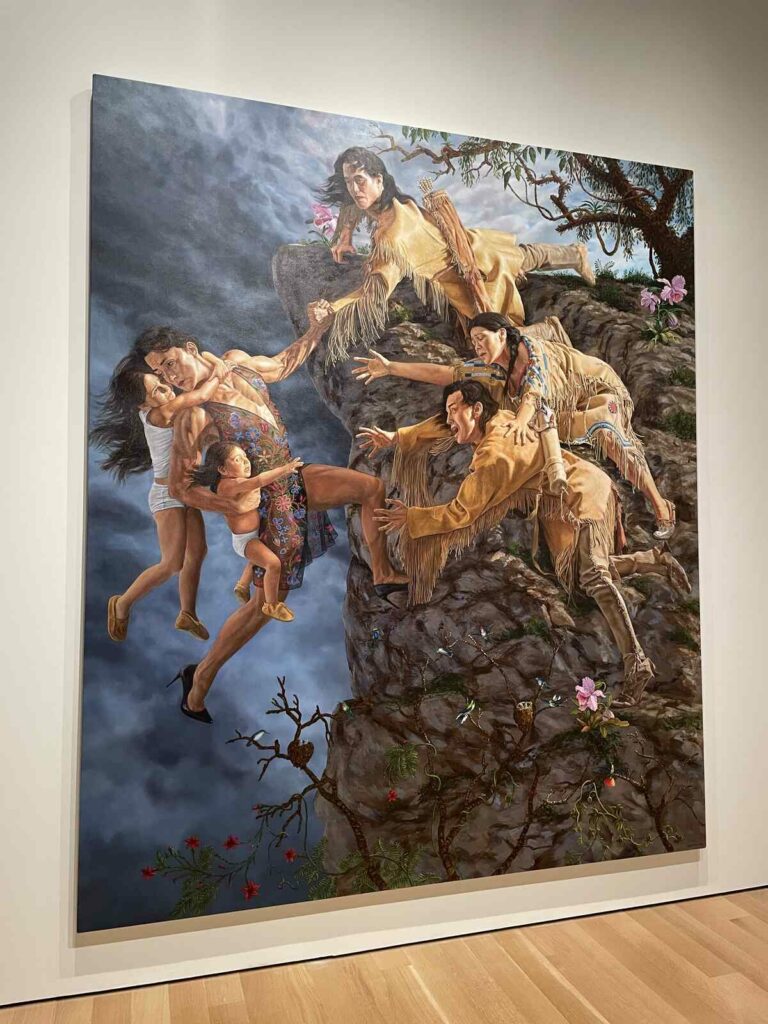
Kent Monkman, a Cree artist celebrated for his provocative and thought-provoking works, created “The Deluge,” an immense and compelling piece measuring 132″ x 264″. This masterpiece draws you in with its sheer scale and powerful commentary on colonialism and its devastating impact on Indigenous peoples. On loan to the AGO from a private collector, this piece is a rare and invaluable addition to the gallery’s collection.
Monkman’s alter ego, Miss Chief Eagle Testickle, frequently appears in his works, challenging historical narratives and providing a voice to marginalized communities. In “The Deluge,” Miss Chief is present, donning signature Christian Louboutin stilettos with their iconic red soles—a distinctive mark of Monkman’s alter ego.
This powerful piece seamlessly blends elements of Indigenous culture with contemporary issues, creating a vivid tableau that resonates deeply with viewers. Monkman’s art deftly critiques the historical and ongoing injustices faced by Indigenous peoples, all while infusing his work with a unique blend of humour, beauty, and sharp social commentary. “The Deluge” stands out in the AGO’s modern collection, not only for its impressive size but for its ability to provoke reflection and conversation about the past and present. It is a testament to Monkman’s ability to use art as a means of powerful storytelling and cultural reclamation.
Engaging Programs and Activities
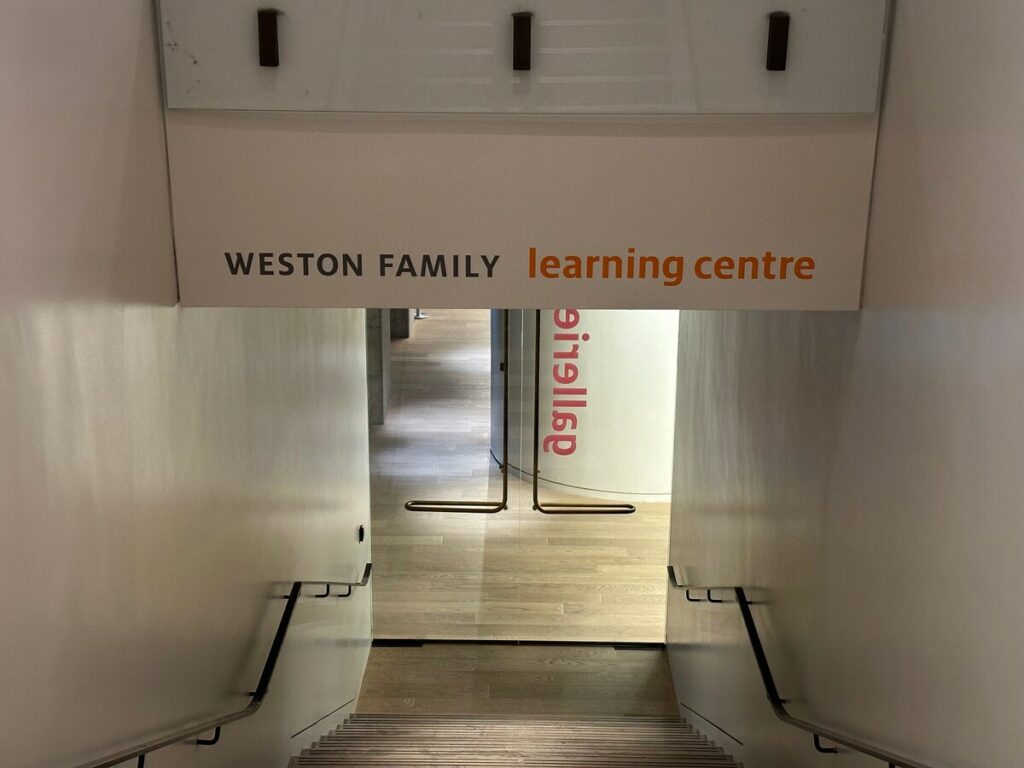
The AGO is not just a place to view art; it’s a hub of creativity and learning. The gallery offers a variety of art classes for both children and adults, catering to all skill levels. These classes provide hands-on opportunities to explore different mediums and techniques, guided by experienced instructors. Whether you’re a budding artist or looking to refine your skills, the AGO’s art classes are a fantastic way to engage with the artistic community. See more below in the ‘Tips’ section.
The AGO Gift Shop
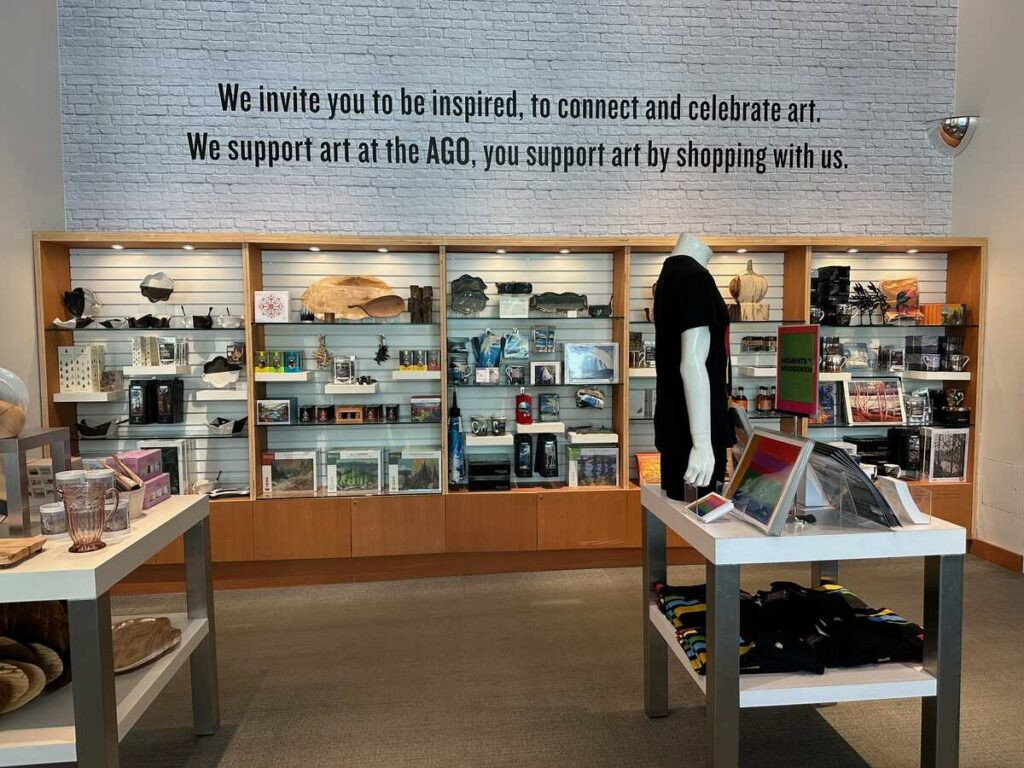
No visit to the AGO is complete without a stop at the gift shop. The shop features a curated selection of items related to the gallery’s exhibitions, as well as works by local artists. From unique art prints and books to handmade jewelry and home décor, the AGO gift shop offers something for everyone. It’s the perfect place to find a memento of your visit or a special gift for an art lover. Be sure to exit through the gift shop!
TIPS
Free Admission on Wednesdays: The AGO offers free admission to its permanent collection every Wednesday from 6 p.m. to 9 p.m. This is a great opportunity to explore the gallery without any cost.
Extended Hours on Fridays: The AGO is open later on Fridays, often until 9 p.m. This allows visitors to enjoy the exhibits after typical work hours, making it a convenient option for an evening outing.
Membership Benefits: Consider becoming a member of the AGO. Memberships offer benefits such as unlimited free admission, exclusive access to member-only events and previews, discounts on special exhibitions, and access to the members’ lounge located in the historic Grange House.
Special Exhibitions: Check the AGO’s website for information on current and upcoming special exhibitions. These often require separate tickets and can be popular, so it’s a good idea to book in advance.
Public Tours: Join one of the free public tours offered by the AGO. These tours provide insights into the gallery’s collection and special exhibitions, enhancing your visit with expert knowledge.
Dining Options: The AGO has several dining options, including Galleria Italia’s café, which offers a range of snacks, beverages, and meals. It’s a great place to take a break and enjoy a meal surrounded by art.
Accessibility: The AGO is fully accessible, with elevators, ramps, and accessible washrooms. Wheelchairs and strollers are also available for visitors to use during their visit.
Family-Friendly Activities: The AGO provides family-friendly activities and spaces, including the Dr. Mariano Elia Hands-On Centre, where children can engage in creative art-making activities.
As you embark on your travels, remember that our journey leaves an impact. Embrace eco-friendly accommodations, support local communities, and reduce plastic use. Respect wildlife by observing from afar and conserve resources like water and energy. Choose sustainable transportation, leave no trace behind, and participate in conservation efforts. Educate yourself and others about the environment you’re exploring. Let’s ensure that we tread lightly on our planet, leaving only footprints of kindness and taking home memories that inspire others to protect our beautiful world. Happy responsible travels!

